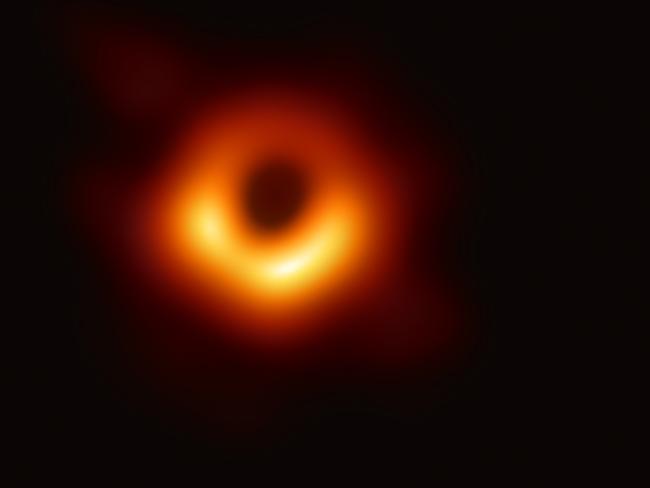Biggest science discoveries of the decade
Some of us did little more than Instagram our food this decade, but meanwhile scientists were out there making incredible new discoveries. Here’s the best of what they found.
Science
Don't miss out on the headlines from Science. Followed categories will be added to My News.
- The most shocking moments of the 2010s
- Big names who won the 2010s
- Most genius new words of the 2010s
- Celeb hook-ups and breakups of 2019
It has been the best and worst of decades for science.
It’s been under attack like never before, dismissed and openly disparaged by those who deny the realities of climate change, or doubt the efficacy of vaccines.
But it has also been a period of unmatched breakthroughs. We broke the barrier of the solar system, discovered new worlds, conquered diseases and unlocked some of the secrets of matter itself.
The achievements have piled up across the disciplines, but it’s fair to say that space science has fired our imaginations the most.
In some ways space feels more remote than ever – Richard Branson promised orbital tourism would be a thing by 2008, and we’re still waiting – but our planetary neighbour Mars has never seemed so inviting.

NASA’s Curiosity Rover brought us an almost endless stream of images of the surface of the red planet in incredible high definition from 2012, while the 2015 announcement that water had been found has altered all our future plans for outer space exploration.
“It means that Mars is much more likely a place we could go,” says Dr Joe Milton from the Australian Science Media Centre.
“Water is fantastically heavy. It takes ridiculous amounts of rocket fuel to lift anything of great weight up into space, so we really wouldn’t want to be taking all of our water with us if we’re going to colonise another planet. We really need to find a place that’s got water there, and it looks like Mars does.”

Further afield – 19 billion kilometres or so – the other big space breakthrough of the decade came in 2013, when the Voyager 1 probe became the first human-made object to leave the solar system, 36 years after it took off from Earth.
Beyond even that, astronomers discovered thousands of new stars and exoplanets, and achieved the impossible earlier this year when they photographed a black hole.
“That was really cool because we thought it ws impossible to produce an image of a black hole, because it doesn’t produce any light for you to photograph,” said Dr Milton.
The object was 53 million light years away and 40 billion kilometres across, he said, but the next challenge will be to capture the “smaller and dimmer” black hole in the middle of the Milky Way.

The collision of two black holes way out in the depths prompted the discovery of gravitational waves in 2015, one hundred years after they were first postulated by Albert Einstein. (At their most basic, they are the ripples in space time caused by massive galactic events.)
“It was only in 2015 that we reached the type of technology that allowed us to make those measurements,” said Professor Celine Boehm from the University of Sydney.
Australian researchers were involved in that discovery, as they were for what was arguably the biggest physics breakthrough of the decade: the Higgs Boson.
Essentially the subatomic particle that enables particles to have mass, the Higgs Boson had been a purely theoretical proposition since 1964, but its discovery at the Large Hadron Collider in Switzerland underscored the primacy of the standard model of physics, Prof Boehm said.

“We had been searching for it for a long time, and we found it eventually in 2012, and just before that a lot of people thought we were never going to discover it basically. A lot of theoreticians were starting to propose other alternatives. So as soon as we discovered it, it was really the re-establishment of this incredible model, which is based on symmetries. It’s a mathematical model, so suddenly everything fits, everything make sense, and it was an incredible discovery.”
Opinions are divided as to its future practical applications.
“Things like the Higgs Boson and gravitational waves all seem a bit theoretical and esoteric and physicsy at the moment, but people thought the same thing when they discovered electrons, and we ended up with electricity, which is quite handy,” Dr Milton said with a laugh. “Those kinds of things can have amazing consequences that we just might not be aware of at the time.”

At the other end of the practical science scale we had advancements in gene technology, which led to the birth of the first three-parent baby in 2016 – a boon to women who would otherwise be at risk of passing on genetic diseases to their children.
Alarmingly, advances in this area also resulted in the first genetically modified babies.
Chinese doctor He Jiankui claimed in 2018 that he had successfully made a pair of twins immune to HIV, thanks to CRISPR gene editing technology.
The scientific community was shocked and appalled by what he had done, Dr Milton said.
“It wasn’t even clear that the parents of these kids were properly informed about the risks, and he just went ahead and created these babies who may have this immunity to HIV, we don’t know, but there’s also a chance he’s messed up other parts of their DNA,” he said. “We have no idea what the effects of that might be.”

HIV was also at the forefront of one of the big medical advances of the 2010s, with Pre-Exposure Prophylaxis (PREP) slashing rates of HIV infection among at-risk populations.
Vaccines for ebola also show promise, after Africa was swept by outbreaks throughout the decade, the worst of which killed more than 11,000 people in Guinea, Sierra Leone and Liberia between 2014 and 2016.
MORE NEWS:
What we Googled in the 2010s revealed
Australia at 2020: Where are we at?
The rise of poo joggers: what’s it about?
Africa also featured prominently in scientific journals as evolutionary biologists – including a number from Australia – wrote and rewrote the genealogy of the entire species, discovering three other prehistoric relatives to homo sapiens.
Their work showed a deal of interbreeding between the species, which shows up in modern human DNA, Dr Milton said.
“It’s all a lot more complicated than we thought,” he said. “It’s a complex web of interactions and interbreeding.”

One of the decade’s other big breakthroughs has been just as complicated, but for very different reasons.
The development of laboratory-grown meat in 2013 was heralded as a potential solution to the world’s food crisis, but it has proved hard to produce at scale.
“They announced it at a news conference and they cooked it and ate it, and food critics described it as ‘close to meat,’” said Dr Milton.
“There’s a lot of people interested in it and it’s getting a lot of investment but at the moment it’s still at the stage where it’s really expensive – so at the moment it’s not taking over from using real meat.”
The first hamburger using lab-grown meat cost $367,000, making it the most expensive burger ever, he said.
Still, that seems like pocket change when compared to the estimated cost of that first-ever image of a black hole.
“It cost a cool $75 million to produce that blurry ring image … and it was worth every cent,” Dr Milton said.


Originally published as Biggest science discoveries of the decade
